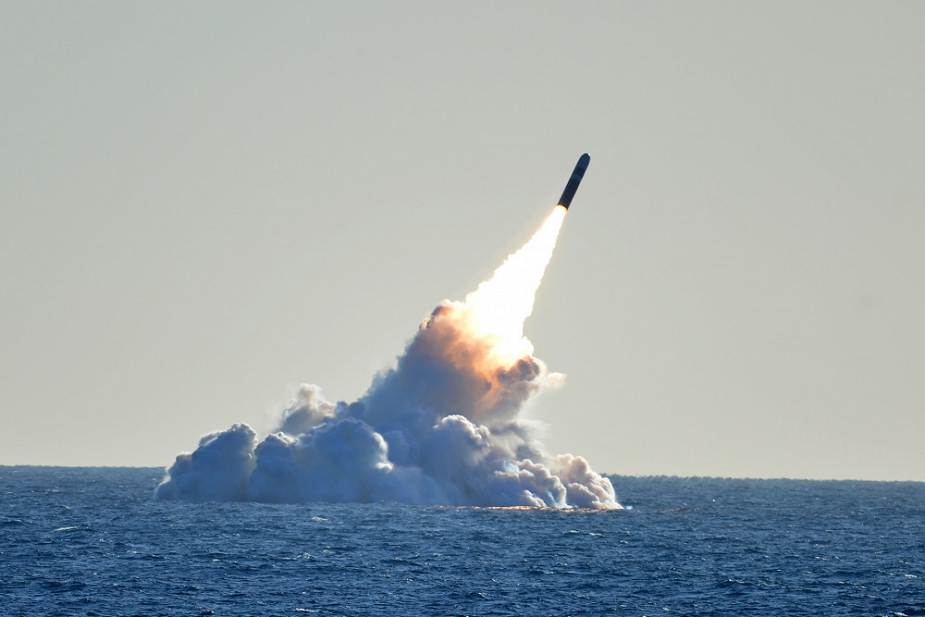According to a contract released by the United States Department of Defense (DoD) on September 18, 2020, BAE Systems Technology Solutions and Services Inc., Rockville, Maryland, was awarded a $52,157,824 cost-plus-incentive-fee, cost-plus-fixed-fee contract modification to previously awarded and announced contract N00030-17-C-0001 to provide services for the U.S. and United Kingdom Trident II D5 strategic weapon system programs, U.S. Guided Missile Submarine (SSGN) attack weapon systems, nuclear weapon surety, and future concepts.
Follow Navy Recognition on Google News at this link
 An unarmed Trident II D5 missile launches from the Ohio-class ballistic missile submarine USS Nebraska (SSBN 739) off the coast of California. (Picture source U.S. DoD)
An unarmed Trident II D5 missile launches from the Ohio-class ballistic missile submarine USS Nebraska (SSBN 739) off the coast of California. (Picture source U.S. DoD)
The Trident missile is a submarine-launched ballistic missile (SLBM) equipped with multiple independently targetable reentry vehicles (MIRV). Originally developed by Lockheed Missiles and Space Corporation, the missile is armed with thermonuclear warheads and is launched from nuclear-powered ballistic missile submarines (SSBNs). Trident missiles are carried by fourteen United States Navy Ohio-class submarines, with American warheads, as well as four Royal Navy Vanguard-class submarines, with British warheads.
The American company Lockheed Martin Space Systems Company is the Trident ballistic missile prime contractor and has developed and produced the missile and support equipment. The company also supplies technical and logistical support at sites where the missiles are deployed. The Trident II D5 missile has achieved 167 successful test launches since design completion in 1989 -- a record unmatched by any other large ballistic missile or space launch vehicle.
The Trident II D5 is the second variant of the Trident ballistic missile family which is more sophisticated and can carry a heavier payload. It is accurate enough to be a first strike, counterforce, or second strike weapon. All three stages of the Trident II are made of graphite epoxy, making the missile much lighter. The Trident II was the original missile on the British Vanguard-class and American Ohio-class SSBNs from Tennessee on. The D5 missile is currently carried by fourteen Ohio-class and four Vanguard-class SSBNs. There have been 172 successful test flights of the D5 missile since design completion in 1989, the most recent being from USS Rhode Island in May 2019.
The Trident II D5 SLBM is a three-stage, solid-fuel, inertially-guided missile with a range from 4,000 (6,400 km) to 7,000 miles (11,200 km) capable of carrying multiple W76-Mk4/Mk4A or W88-Mk5 reentry bodies. The missile is launched by the pressure of expanding gas within the launch tube. When the missile broaches the waterline, it enters the boost phase, expending its first, second, and third-stage rocket motors. Following third-stage motor separation, the missile deploys the reentry bodies.



